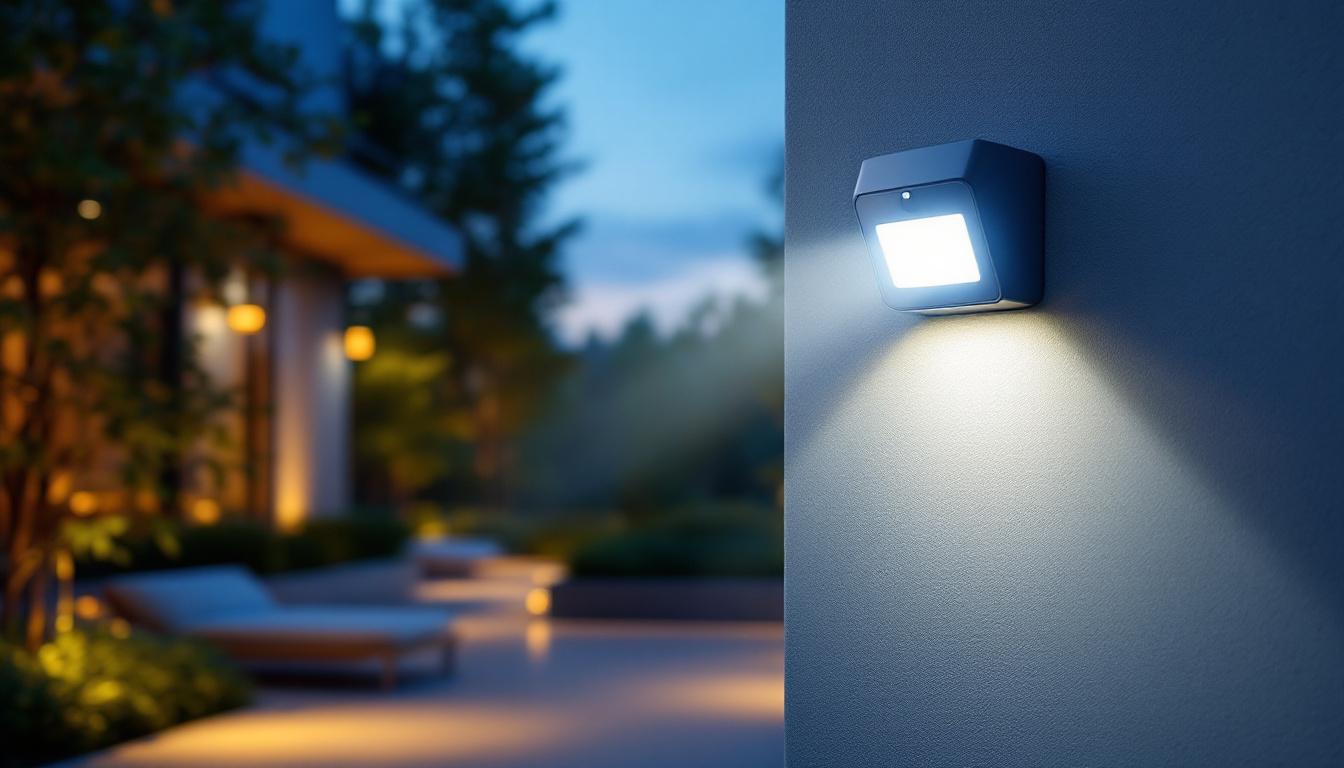
For lighting contractors, selecting the right light fixture for a garage is more than just a routine task—it’s a critical component that affects safety, functionality, and energy efficiency. Garages serve multiple purposes, from vehicle storage to workshops or even additional living space. The lighting must accommodate these diverse uses while adhering to industry standards and client expectations.
Proper garage lighting enhances visibility, reduces accidents, and creates a comfortable environment for various activities. Poorly lit garages can lead to safety hazards, such as tripping or difficulty in performing detailed tasks like automotive repairs or woodworking. Additionally, well-designed lighting can improve security by deterring unauthorized access.
When considering garage lighting, it’s essential to evaluate the different types of fixtures available. LED lights are increasingly popular due to their longevity and energy efficiency, often outlasting traditional incandescent bulbs by years. Their bright, white light mimics natural daylight, which is particularly beneficial for tasks that require precision. Furthermore, the low heat emission of LEDs helps maintain a cooler garage environment, which can be especially advantageous in warmer climates. For those who utilize their garages for hobbies, such as crafting or DIY projects, task lighting—like adjustable work lights or under-shelf fixtures—can provide the focused illumination needed for intricate work.
Moreover, the layout of the garage plays a significant role in determining the best lighting strategy. A well-planned arrangement that includes overhead lights, wall-mounted fixtures, and even motion-sensor lights can create a well-lit space that is both functional and inviting. Incorporating dimmable fixtures can also enhance versatility, allowing users to adjust the brightness based on the task at hand or the time of day. By investing in proper lighting solutions, homeowners can transform their garages into safe, efficient, and multi-functional spaces that cater to their specific needs.
One of the primary considerations is the brightness level, often measured in lumens. Garages typically require higher light levels than other residential spaces due to their functional nature. For general lighting, a range between 3,000 to 6,000 lumens is recommended depending on the size and purpose of the garage. Task-specific areas, such as workbenches, may need even more focused illumination. This ensures that every corner of the garage is adequately lit, allowing for safe navigation and efficient work, whether you are fixing a vehicle or organizing tools.
Contractors should also consider the color temperature of the light source. A neutral white light (around 4000K to 5000K) is ideal for garages as it closely mimics daylight, enhancing color accuracy and reducing eye strain during detailed work. Additionally, the right color temperature can significantly impact the overall ambiance of the garage, making it a more inviting space for various tasks. For those who spend extended periods in their garage, such as hobbyists or DIY enthusiasts, the right lighting can make a substantial difference in comfort and productivity.
With increasing emphasis on energy conservation, LED fixtures have become the preferred choice for garage lighting. LEDs consume significantly less electricity compared to incandescent or fluorescent bulbs and have a longer lifespan, which reduces maintenance costs and environmental impact. When specifying fixtures, look for those with ENERGY STAR certification or similar energy efficiency ratings. This not only helps in cutting down electricity bills but also contributes to a more sustainable living environment, aligning with modern eco-friendly practices.
Incorporating smart lighting controls, such as motion sensors or timers, can further optimize energy use by ensuring lights are only on when needed. This is especially beneficial in garages that are used intermittently. For instance, a motion sensor can automatically turn on the lights when someone enters the garage and switch them off after a set period of inactivity, providing convenience and additional energy savings. Furthermore, some advanced systems allow for remote control via smartphone apps, enabling users to manage their garage lighting from anywhere, enhancing both security and efficiency.
Garages often expose fixtures to dust, moisture, and temperature fluctuations. Selecting fixtures with appropriate ingress protection (IP) ratings ensures longevity and reliable performance. For example, an IP44 rating provides protection against solid objects larger than 1mm and water splashes, making it suitable for most garage environments. This is particularly important in areas where water may accumulate or where tools and equipment are frequently moved around, as it minimizes the risk of electrical failures.
Materials like aluminum or polycarbonate housings offer durability and resistance to corrosion. Additionally, fixtures with shatterproof lenses enhance safety in case of accidental impacts. Beyond just safety, the choice of materials can also influence the overall aesthetic of the garage. Sleek, modern designs in durable materials can elevate the space, making it not just a functional area but also an extension of the home’s design. Moreover, opting for fixtures that are easy to clean and maintain can save time and effort, ensuring that the garage remains a tidy and efficient workspace.
Ceiling-mounted LED shop lights are a popular choice due to their broad, even illumination and ease of installation. These fixtures often feature linear designs that distribute light uniformly across the garage floor, minimizing shadows.
They are ideal for general lighting and can be installed in multiples to cover larger spaces. Many models come with integrated diffusers to reduce glare, which is crucial for comfort during extended use.
Recessed fixtures offer a sleek, unobtrusive lighting solution, particularly in garages with finished ceilings. They provide focused, downward illumination and can be strategically placed to highlight work areas or storage zones.
While recessed lighting requires more installation effort and ceiling depth, it contributes to a clean aesthetic and reduces the risk of damage from overhead activities.
Wall-mounted lights are useful for illuminating specific zones such as tool racks or entry points. Utility lights with adjustable heads allow users to direct light precisely where needed, enhancing task performance.
These fixtures are often used in conjunction with ceiling lights to create layered lighting schemes that improve overall functionality.
For contractors advising clients who use their garages as workshops, portable LED work lights and clamp lamps provide flexibility. These can be repositioned as needed and often feature rechargeable batteries, eliminating the need for constant wiring.
Task lighting supplements ambient light and is essential for detailed work, such as mechanical repairs or crafting.
Effective garage lighting depends heavily on fixture placement. Lighting contractors should ensure even distribution to avoid dark spots and glare. For ceiling fixtures, spacing should be calculated based on fixture lumen output and garage dimensions. A common guideline is to space fixtures approximately 4 to 6 feet apart for uniform coverage.
Task lighting should be positioned to minimize shadows on work surfaces, typically by placing lights opposite the dominant hand of the user. For example, right-handed individuals benefit from lighting on the left side to prevent their hand from casting shadows.
All garage lighting installations must comply with local electrical codes and the National Electrical Code (NEC) requirements. This includes using appropriate wiring, circuit breakers, and grounding methods. Lighting contractors should verify that fixtures are rated for the intended environment and that any damp or wet location ratings are adhered to.
GFCI (Ground Fault Circuit Interrupter) protection is often required in garages, especially near sinks or areas prone to moisture. Ensuring proper circuit protection enhances safety and reduces liability.
Designing lighting systems with maintenance in mind extends fixture life and reduces service costs. Fixtures should be accessible for bulb replacement or cleaning without requiring extensive disassembly. LED fixtures generally require less frequent maintenance but still benefit from periodic inspection to ensure optimal performance.
The rise of smart home technology has influenced garage lighting solutions. Lighting contractors can offer clients systems that integrate with home automation platforms, allowing remote control, scheduling, and customization of lighting scenes via smartphones or voice assistants.
Motion-activated smart lighting enhances convenience and security by automatically turning lights on when someone enters the garage and off after a set period of inactivity.
Human-centric lighting (HCL) focuses on adjusting light intensity and color temperature to support circadian rhythms and improve occupant well-being. In garages that double as workspaces or hobby areas, HCL can reduce fatigue and increase productivity by simulating natural daylight patterns.
Implementing tunable white LED fixtures allows users to adjust lighting conditions based on the time of day or task requirements, offering a tailored lighting experience.
Advancements in battery technology have made wireless, rechargeable LED fixtures a viable option for garages without extensive wiring. These fixtures simplify installation and provide flexibility in lighting layout, especially in retrofit projects or detached garages.
While battery-powered lights may not yet match the brightness of wired fixtures, they are ideal for supplemental lighting or temporary setups.
For lighting contractors, understanding the nuances of garage lighting is essential to delivering solutions that meet client needs, comply with regulations, and incorporate the latest technology. By considering factors such as brightness, energy efficiency, fixture type, and installation best practices, contractors can design lighting systems that enhance safety, functionality, and comfort.
Staying informed about emerging trends like smart lighting and human-centric designs allows contractors to offer innovative options that add value and differentiate their services. Ultimately, a well-lit garage is a versatile, safe, and inviting space, reflecting the quality and expertise of the lighting professional behind the project.
Ready to elevate your garage lighting installations with superior products that promise safety, functionality, and comfort? Look no further than LumenWholesale, where we specialize in providing lighting contractors with high-quality, spec-grade lighting solutions at unbeatable wholesale prices. Our extensive selection is designed to meet the highest industry standards, ensuring you deliver optimal lighting solutions for every garage project. Plus, with free shipping on bulk orders, you can trust that you’re getting the best value without any hidden fees. Don’t compromise on quality or cost—choose LumenWholesale for the perfect blend of affordability and convenience. Wholesale Lighting at the Best Value is just a click away.

Discover essential insights into light fixtures that every lighting contractor should know.

Discover essential insights and tips in “Lighting.Com: A Guide for Lighting Contractors,” your go-to resource for mastering the art and science of lighting installation.

Discover the ultimate checklist for lighting professionals to ensure optimal performance and safety with outdoor signal lights.

Discover how the brightest motion sensor lights can revolutionize your lighting installation projects.